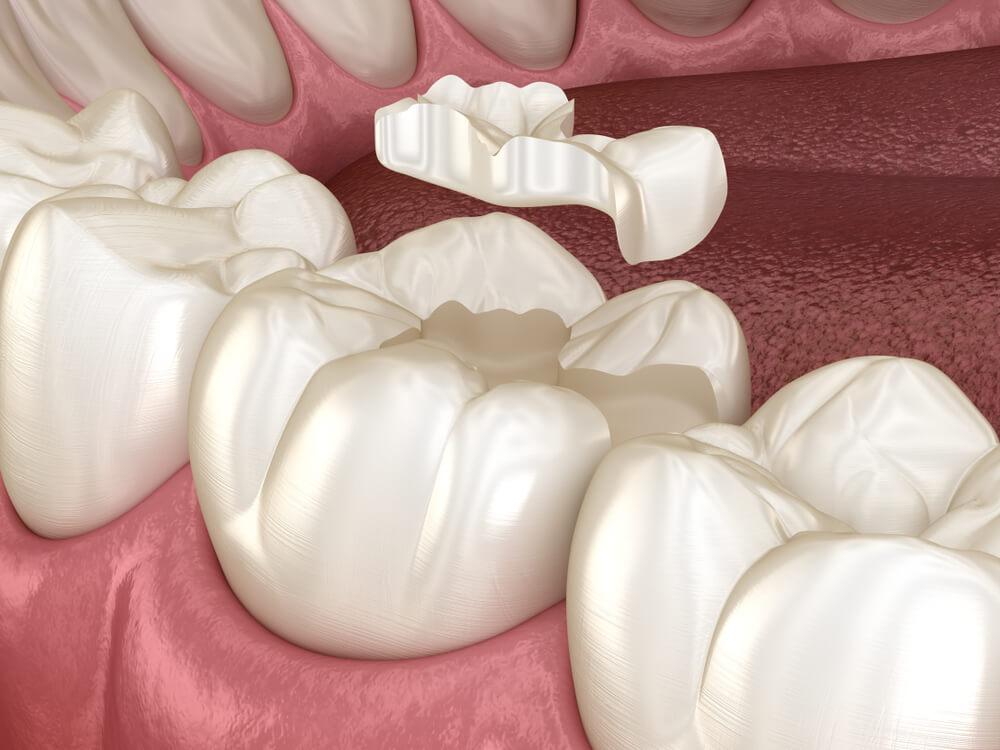Inlays and onlays are two types of indirect fillings. Unlike direct composite fillings, indirect fillings are fabricated outside the mouth from porcelain or metal, then cemented in place. An inlay is used to cover the entire chewing surface of the affected tooth, while an onlay is used to cover the entire chewing surface plus one or more of the tooth’s cusps, or points.
Did You Know?
Inlays and onlays are commonly thought of as the “middle point” between composite fillings and dental crowns. This is because they are often used when tooth damage or decay is too large for a composite filling, but too small to warrant the placement of a dental crown.
Frequently Asked Questions:
Do I need an inlay or onlay?
You may need an inlay or onlay if you have a large area of damage or decay on one or more of your molars. The damaged tooth tissue must be significantly damaged enough to warrant the use of an indirect filling instead of a composite filling. While composite fillings are ideal for small to medium areas of decay, larger spaces will need to be restored with the stability of an inlay or onlay. To determine if an inlay or onlay is right for you, schedule a consultation with Maxtown Family Dental today.
What can I expect when having an inlay or onlay placed?
When having an inlay or onlay placed, the first step is to prepare the tooth. This means that any damaged or decayed tissue will be removed, and any remaining tissue will be reshaped to accommodate the future restoration. To keep you comfortable and at ease during these minor alterations, dental sedation and anesthesia will be used.
Once the damaged tissue has been removed, then a dental impression or oral scan will be taken of your mouth. The information obtained will be used by a dental labo lab to fabricate your customized inlay or onlay. Since it can take about 1-2 weeks for the dental lab to fabricate your restoration, you will be given a temporary restoration to wear for the time being. In some cases, your dentist may have an in-office milling machine that will shorten the wait time.
Once the dental lab has completed your permanent restoration, you will finally be able to try it on. In most cases, only minor adjustments will need to be made for you to obtain the proper fit. After any adjustments have been made, the permanent inlay or onlay will be cemented in place and blended with the natural tooth structure.
What can I expect after having an inlay or onlay placed?
Between your first and second appointments, you will be fitted with a temporary restoration. Since temporary restorations are not as durable as permanent restorations, you should avoid chewing on the side of the mouth that has the temporary. However, once receiving your permanent inlay or onlay, you can return to your normal diet and chewing habits.
To care for your inlay or onlay, you will simply need to practice good oral hygiene. This means brushing twice a day, flossing once a day, and visiting your dentist every six months for an exam and cleaning. To prevent your restoration from becoming damaged, we also recommend that you avoid biting your nails, using your teeth to open or hold things, grinding your teeth, and chewing excessively hard foods, such as ice. When properly cared for, you can expect your inlay or onlay to last about 10-15 years, depending on its material.




